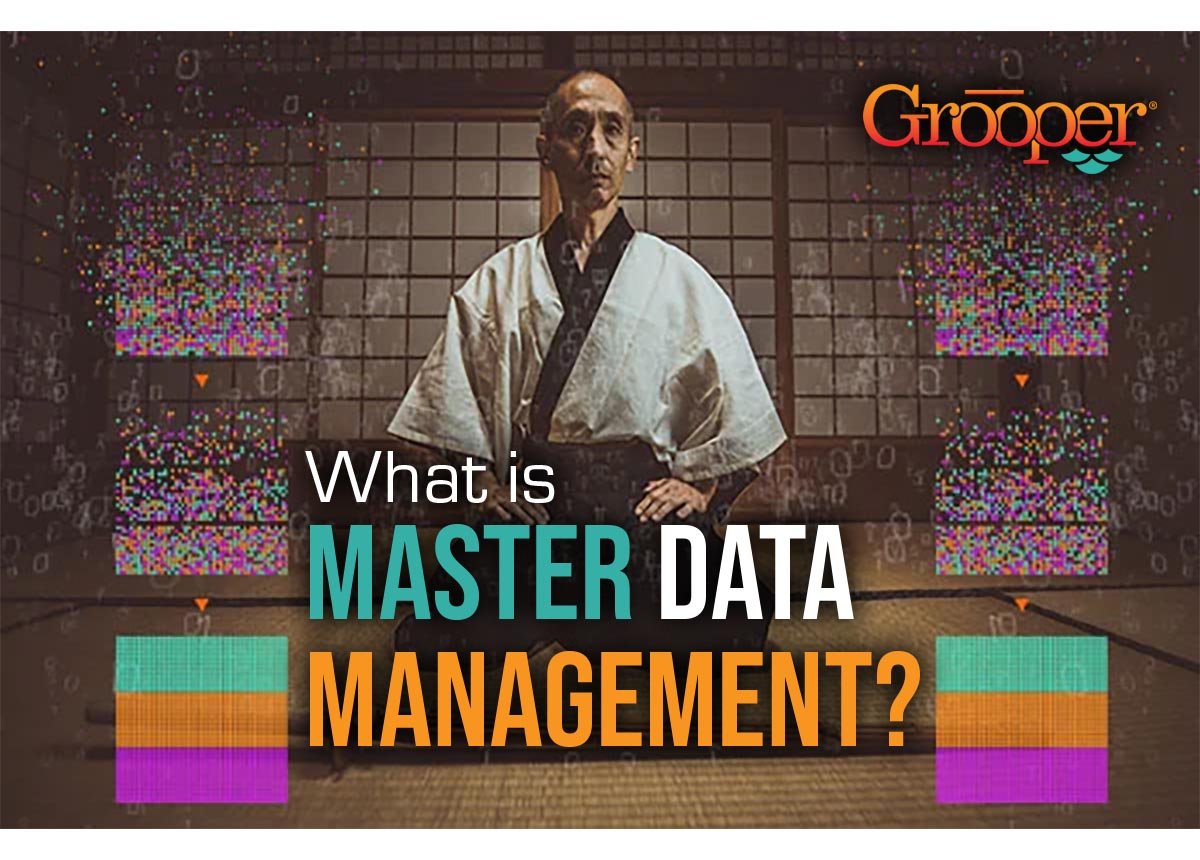What is Master Data?
Master data is the data that sits at the center of all core business processes and applications. It’s high-confidence, high-integrity (master) data that’s relied on to produce favorable business outcomes.
As more decision making and planning activities leverage new algorithmic methods and processes (like Machine Learning), managing master data is more important than ever. You can imagine the problems and devastation caused by decisions based on bad or inconsistent data.
An Example of Bad (Very Bad) Master Data Management
 In fact, we can learn a lot from NASA’s loss of the Mars Orbiter in 1999. Billions of dollars in time, research, and equipment vanished because of an easily avoidable data consistency problem.
In fact, we can learn a lot from NASA’s loss of the Mars Orbiter in 1999. Billions of dollars in time, research, and equipment vanished because of an easily avoidable data consistency problem.
The problem? Different units of measurement were used by NASA and Lockheed Martin. According to NASA engineer Richard Cook, “The spacecraft had more or less hit the top of the atmosphere and burned up.” Apparently the thrusters were only putting out ¼ of the thrust they should have been.
In NASA’s case, units of measurement certainly was master data, but for some reason, it didn’t make their list.
So What is Master Data Management?
Master data management is governing master data for consistency and reuse with the goals of:
- Reduced IT costs
- Assuring consistent positive business outcomes
- Preserving business process integrity
 According to Gartner, Inc:
According to Gartner, Inc:
“Master data management (MDM) is a technology-enabled discipline in which business and IT work together to ensure the uniformity, accuracy, stewardship, semantic consistency and accountability of the enterprise’s official shared master data assets.
"Master data is the consistent and uniform set of identifiers and extended attributes that describes the core entities of the enterprise including customers, prospects, citizens, suppliers, sites, hierarchies and chart of accounts.”
THE BIG IDEA: MDM is simply an attempt to solve an age-old problem: inconsistent versions of critical data within the center of an organization.
This problem begins the very moment a second business application is added.
MDM goes hand-in-hand with an organization’s enterprise data model which covers all (most!) of the organization’s data.
"An Enterprise Data Model represents a single integrated definition of data, unbiased of any system or application. It is independent of “how” the data is physically sourced, stored, processed, or accessed.
The model unites, formalizes, and represents the things important to an organization, as well as the rules governing them."
— Noreen Kendle, 2005
Why Master Data Management is Important
The importance of managing master data cannot be overstated. MDM:
- Increases agility
- Drives competitive differentiation
- Underpins critical business processes
What makes MDM difficult is the fact that many software applications are developed and deployed in silos. But adding even more difficulty is low desire, commitment, and ability in many organizations to create a common link between data and improving business outcomes.
BIG TIP: Historically, it's often been difficult for CIOs, and more recently CDOs, to demonstrate the value for advanced data analytics strategy.
To justify the effort, focus strategy on innovation, the value of information, risk mitigation, and supporting the decisions that drive the most valuable business outcomes.
What Leads to Successful Master Data Management?
Successfully developing and maintaining master data requires managing metadata, data modeling and mapping, and semantic reconciliation (recognizing that two objects are the same even when they’re described differently).
Not all data needs to be managed. If you listed all data objects or attributes stored in all business processes and applications, the list would be immense.
So how do you determine what data should fall within MDM?
 Use this rule of thumb: the only data which should be included in your MDM program is data that is directly tied to the business outcomes and processes the organization is willing to change.
Use this rule of thumb: the only data which should be included in your MDM program is data that is directly tied to the business outcomes and processes the organization is willing to change.
It is easy to see that organization-wide MDM is a major undertaking. It requires an immense amount of time, money, and frankly – patience to implement. Successful MDM initiatives start out small, and grow in scope over time.
Another way to determine the most important data to manage is looking at what metrics and data support the most important KPIs. Maintaining high data quality targets for these critical processes is important.

A logical, organic approach to an MDM implementation is to adopt a single-subject-area approach. For example, a procurement outsourcing organization may use MDM for line-item invoice validations. Another common starting point is using MDM to create a 360-degree view of customers to support CRM objectives. This incremental effort builds foundational stepping points for future MDM growth.
How to Get Started with Master Data Management
There are many different ways that this important data can be stored and managed. Some methods include consolidation, registry, centralized, and coexistence.
- Consolidation – Primarily used to support business intelligence and data warehousing. Some refer to this as downstream MDM – applying MDM downstream of the systems which created the master data.
- Registry – As the name suggests, this is an index for master data which remains fragmented across silos
- Centralized – This style is used in high-control, top-down environments where data is authored, stored, and accessed from one or many MDM “hubs.” It offers the greatest control over access and security, but is highly invasive to the organization.
- Coexistence – This is a large-scale distributed model. A central system maintains a “golden copy” of data which is published to subscriber systems.

Implementation styles are not mutually exclusive. Many organizations start with one style and later move to another. You might start with consolidation, and then move to coexistence based on changing needs.
MDM is Not a Technology
There are many systems integrators and MDM vendors to choose from – all offering their flavor of MDM and tailoring the best approach for your organization’s goals and data. It is not uncommon to leverage multiple MDM products or vendors.
But don't make the mistake of thinking about MDM as a technology. Rather, it is a discipline focused on the processes required to govern master data. Technology is simply used to support the discipline.
What is Master Data Management – the Bottom Line
The goal of MDM is achieving consistency, accuracy, integrity, and semantic consistency of master data. And all this in an effort to grow and support important business outcomes.
MDM helps break down operational data silos, but requires an immense amount of commitment from the organization.
BE WARNED: The greatest challenges to MDM are not technical. Rather, they’re related to political and organizational silos.
About the Author: Brad Blood
Senior Marketing Specialist at BIS




